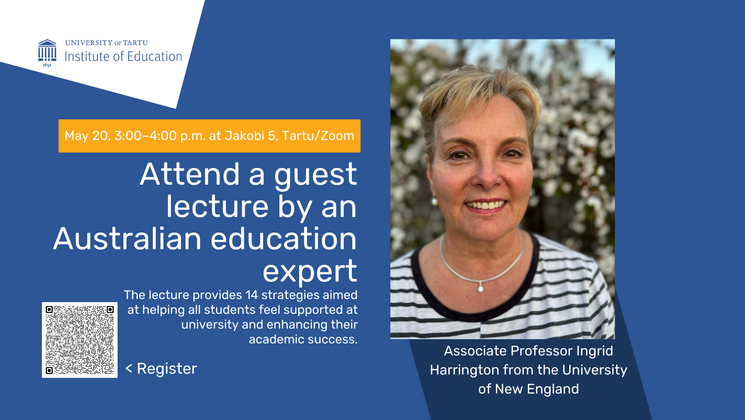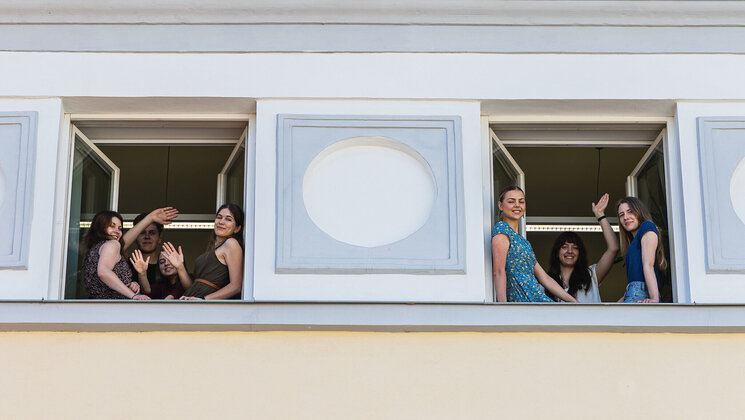Professor of Psycholinguistics Virve-Anneli Vihman speaks at her inaugural lecture about how children acquire Estonian and other languages

On Tuesday, 29 April at 16:15, Professor of Psycholinguistics Virve-Anneli Vihman gives her inaugural lecture “Keelemängu aabits. Kuidas lapsed omandavad eesti keelt ja muid keeli” (“The ABC of language game. How children acquire Estonian and other languages?”) in the White Hall of the University of Tartu Museum. The lecture is in Estonian.
Children construct the language system based on linguistic input. They use all the information around them: visual information, the melody of the language, semantics, social routines, syllable neighbourhood frequency and much more. A child who acquires two languages simultaneously faces more diverse input and a more complex task than a monolingual child, but generally manages it very well. In a supportive environment, even a child who encounters a second language later will acquire both languages.
“A small child may initially resist when placed in a new language environment, but once they overcome this, they can learn the language quite easily. Older people have better language learning strategies, but they generally have less time to learn a language and find it harder to overcome the influence of their first language in the second language,” said Virve-Anneli Vihman.
Multilingualism, i.e. the ability to use more than one language, is a natural, ancient part of individual and societal experience, but unfortunately, language acquisition models have been created with monolingual speakers in mind. Based on her research, the professor noted that multilingual children are very diverse, and their language development is influenced by many variables in the environment, language, and the child themselves. “For example, children growing up with Estonian and Norwegian are in very different situations depending on whether they live in Estonia or Norway,” explained Vihman.
According to the professor, when studying language acquisition, it is important to keep in mind various sources of information, individual and environmental differences, and interlingual peculiarities. With multiple languages, the number of factors affecting their acquisition multiplies, and comparing speakers becomes more complex. Additionally, aspects that are difficult to measure become important: besides the speaker’s age and the duration and intensity of exposure to the second language, also the environment, motivation, knowledge of other languages, and more.
In the lecture, Vihman provides examples of the acquisition of one and multiple languages and its heterogeneity. She discusses why language acquisition and multilingualism are studied at all and what studies are still needed considering the situation in Estonia. “For example, Estonian-speaking children learn to inflect words earlier than English-speaking children because it is a vital part of their native grammar. This is important knowledge both in Estonia and elsewhere to understand the nature and learnability of language, as well as people’s cognitive abilities and tendencies,” said the professor.
Virve-Anneli Vihman was born in the United States of America and obtained her bachelor’s degree in philosophy at Wesleyan University in 1994. She defended her master’s (1999) and doctoral degree (2004) in Theoretical Linguistics at the University of Edinburgh, Scotland. In her doctoral thesis, Vihman addressed Estonian voice constructions. After her doctoral studies and postdoctoral research in Edinburgh, she led the International Relations Office at the University of Tartu from 2004 to 2013, then continued her academic career with a Marie Skłodowska-Curie postdoctoral fellowship at the University of Manchester, focusing on child language acquisition. Since 2016, she has worked at the University of Tartu Institute of Estonian and General Linguistics as a senior research fellow and associate professor. Since 1 September 2024, Vihman is Professor of Psycholinguistics, and she also leads the newly established Centre for Multilingualism.
Vihman has researched monolingual and multilingual children speaking Estonian and other languages, youth language use, and language variation. She has led the compilation of the Estonian teen language corpus and the international consortium Methodological Excellence in Data-Driven Approaches to Linguistics (MEDAL), and has participated in the development of tools to support multilingual children.
The aim of the inaugural lecture is to give the new professor an opportunity to introduce herself, her specialisation and field of research. At the end of the public lecture, the audience will be able to ask the professor questions. Everyone interested is welcome. A live webcast will be available on UTTV.






